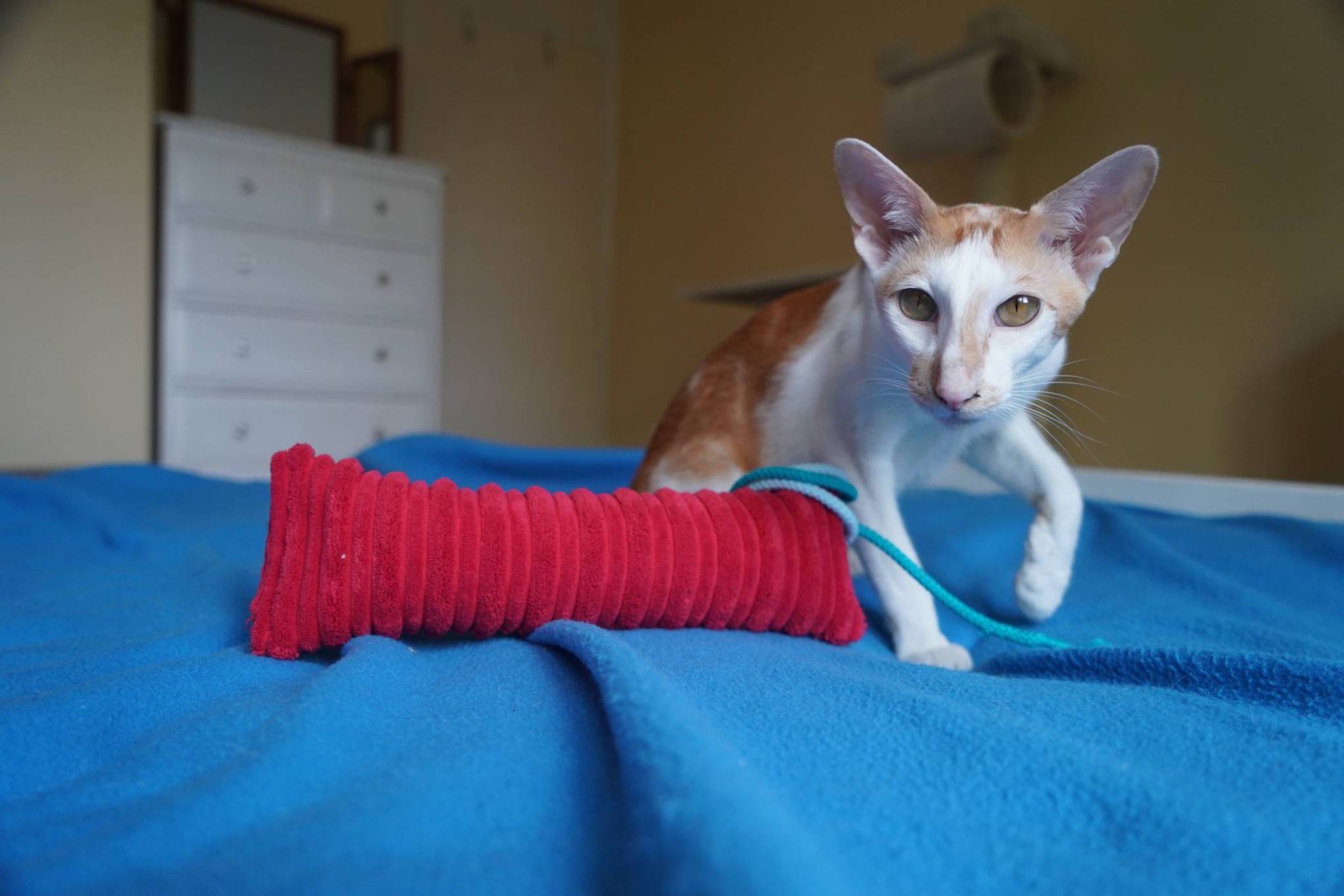What you need to know about pet diabetes this National Diabetes Week (8–13 June)
Many of us will be familiar with diabetes in humans, but may not be aware that our pets can also develop the condition – especially as the signs aren’t always obvious. During National Diabetes Week (8–13 June), it’s important to raise awareness for the millions of people – and pets – who are living with the condition.
PDSA Vet Nurse Nina Downing said: “Diabetes is a disease that develops when your pet’s body can’t produce enough insulin to control their blood sugar level, causing it to become dangerously high. It usually develops when the body attacks the insulin producing cells in the pancreas, which can sometimes happen after pancreatitis. Obesity can also be a cause of diabetes in cats, and can make the condition harder to manage in dogs. If left untreated, diabetes can lead to a potentially life-threatening condition called ‘diabetic ketoacidosis’ (DKA).
“Most well managed diabetic pets that respond to treatment can have long, happy lives. However, diabetes cannot be cured, so ongoing treatment and management of diet and exercise is needed. This does take commitment and hard work, and can cost a lot of money over your pet’s lifetime so please speak with your vet if you have any concerns about treating diabetes in your pet.
Spotting the symptoms
“Diabetes can be hard to spot so it’s important to know the symptoms. Like humans, one of the first major signs of diabetes in pets is drinking more than usual and, in turn, needing to urinate more often. You may also notice an increased appetite, regular vomiting, or that your pet seems under the weather and less energetic. Some of these symptoms may develop slowly over time, so it’s always important to monitor your furry friend – the earlier you spot any changes and contact your vet, the better.
Medical treatment
“If your dog or cat is diagnosed with diabetes, your vet may prescribe once or twice daily insulin injections. They will demonstrate how to do this safely at home and can give any additional guidance you may need. Your vet may also advise introducing a controlled diet, which means feeding your pet specific types of food at the same times each day to help regulate their blood sugar levels.
What you can do to help
“Alongside medical treatment, owners will need to take small steps after diagnosis to help our precious pets lead a fulfilling life. Diet and exercise are essential to any pet’s health and wellbeing, but this is especially important for dogs and cats with diabetes. The healthier your furry friend is, the easier their condition will be to control.
“Stick to a consistent feeding routine and avoid additional foods between meals as this can cause unpredictable changes in blood sugar. Replace extra treats with lots of fuss, play time and attention – they’ll appreciate this just as much as an unhealthy snack!

“Exercise can affect blood sugar levels, so diabetic dogs and cats will need a set amount, at set times each day. Suddenly increasing or decreasing your pet’s daily exercise could cause their blood sugars to change, so try to keep a steady routine each day and don’t push them too hard.”
For more guidance on implementing a healthy lifestyle for your furry family member, check out PDSA’s #WeighUp campaign, with free access to expert advice on diet, exercise and wellbeing for your furry friend pdsa.org.uk/weighup-pr
PDSA is the UK’s largest vet charity providing a vital service for pets across the UK whose owners struggle to afford treatment costs for their sick and injured pets. For many vulnerable pets, PDSA is there to help when there is nowhere else for their owners to turn. Support from players of People’s Postcode Lottery helps us reach even more pet owners with vital advice and information. www.pdsa.org.uk
Visit our Shop for top-quality cat toys and cat lover products!
We regularly write about all things relating to cats on our Blog Katzenworld!
My partner and I are owned by five cheeky cats that get up to all kinds of mischief that of course, you’ll also be able to find out more about on our Blog
If you are interested in joining us by becoming a regular contributor/guest author do drop us a message @ info@katzenworld.co.uk .

